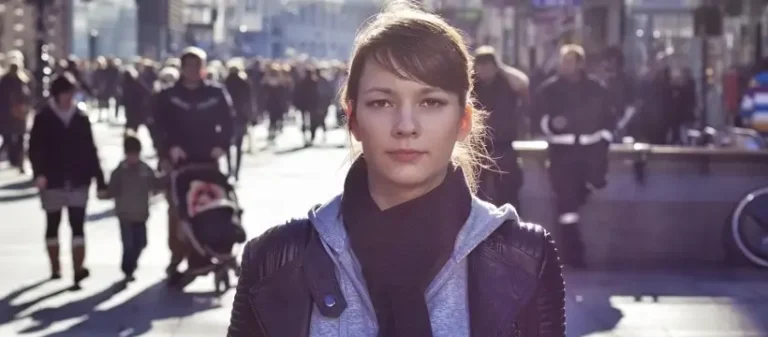
In the United Kingdom, depression casts a shadow over the lives of millions of people, transcending age, gender and socioeconomic status.
Before we look at at this in more detail, if you would rather listen to this blog, it is available in our Blogcasts on the Pocket Power App which you can download on the App Store and on Google Play.
According to recent statistics, around one in four people will experience a mental health problem like depression each year. However, what makes depression particularly insidious is its enigmatic nature; it’s not always caused by a single traumatic event or easily traceable to a specific cause. In fact, for some people, the reasons behind their depression may remain elusive, shrouded in a complex interplay of biological, psychological and environmental factors.
This leaves many people unaware of why they are depressed, thus perpetuating a cycle of uncertainty and self-doubt. Without a clear understanding of the underlying causes, it becomes increasingly challenging to address and manage the symptoms of depression effectively. Moreover, the lack of insight into one’s own emotional state can further exacerbate feelings of hopelessness and helplessness, deepening the grip of depression.
So how do we know who is depressed and who isn’t? Well, we don’t! We can go about our day to day business, interacting and conversing with people while not having the slightest idea of how they are feeling or what they are struggling with. Our interactions with the people we come across each day could be the one thing that could either lift them up or break them down.
What we do know is that depression isn’t always visible, and its impact can be far-reaching, affecting not only the individual but also their family and friends. In this blog, we are going to discuss the intricacies of depression, exploring its diverse manifestations and the challenges of recognising and addressing its invisible struggles.
Depression is a multifaceted condition that can affect individuals of all ages, genders and backgrounds. Contrary to common misconceptions, its manifestations aren’t always visible. It’s not just a case of looking sad or withdrawn. Depression can lurk beneath the surface, hidden from casual observation, even in individuals who appear to lead perfect lives.
To understand the complexity of depression, it is important to first understand that it comes in various forms, each with its unique set of symptoms and triggers. Some people may develop depression as a result of traumatic experiences, such as abuse or loss, while others may struggle due to a chemical imbalance in the brain. Additionally, genetic factors, environmental influences, and life circumstances can all contribute to the development of depression.
One of the challenges in recognising depression lies in its diverse presentation. While some people may exhibit classic symptoms like persistent sadness, loss of interest in activities and changes in sleep or appetite, others may experience less obvious signs. These can include irritability, physical ailments, or even high-functioning depression, where individuals maintain outward success while battling their inner turmoil.
In today’s society, there’s often a pressure to present an image of perfection to the world. Social media exacerbates this phenomenon, with its mask of perfection portraying idealised versions of life that doesn’t always reflect reality. As a result, some people struggling with depression may feel compelled to maintain this façade, fearing judgement or stigma if they reveal their inner struggles.
Someone living with depression may go to great lengths to hide their condition, putting on a smile in public while silently battling overwhelming sadness or emptiness. This can lead to a sense of isolation, as they may feel disconnected from others, believing that their experiences aren’t valid because they don’t match societal expectations of what depression looks like.
The stigma surrounding mental health issues remains a significant barrier when addressing depression. Misconceptions and stereotypes perpetuate the notion that depression is a sign of weakness or a character flaw, rather than a legitimate medical condition. This stigma can prevent people from seeking help or disclosing their struggles, further exacerbating feelings of shame and isolation.
It’s essential to challenge these misconceptions and foster a culture of understanding and acceptance around mental health. Depression is not a choice, nor is it something that can be overcome through sheer willpower. It’s a complex interplay of biological, psychological, and social factors that require compassionate support and professional intervention.
Whether you are with friends, family members, colleagues or strangers you pass in the street, it’s crucial to cultivate empathy and awareness when interacting with others. Rather than making assumptions based on outward appearances, take the time to listen and validate the experiences of those around you. We can all play our part in cultivating a less intimidating environment by offering support without judgement, and encouraging open communication about mental health.
And if you suspect that someone you know may be struggling with depression, reach out to them in a non-judgmental manner. Express your concern and offer to help them connect with resources or seek professional support. Sometimes, a simple gesture of kindness and understanding can make a world of difference to someone battling invisible demons.
Depression is a complex and multifaceted condition that can affect anyone, at any stage of life, regardless of outward appearances or life circumstances. Recognising and addressing the invisible struggles of depression requires empathy, understanding and a commitment to breaking down stigma. By fostering open communication and providing support to those in need, we can create a more compassionate and inclusive society where mental health is prioritised and valued. Remember, just because you can’t see someone’s pain doesn’t mean it isn’t there.
Our Other Blogs
- All Posts
- All
- Blog
- Fitness
- Latest
- LIFE Fit Recipes
- News & Events
- Nutrition
- Recipes
- Wellbeing

Breakfast is often called the most important meal of the day, but why? In this blog, we explore how your...

For years, protein has been placed on a golden pedestal in the fitness world. It’s the magic word printed across...

Is Depression Visible? Depression doesn’t always look the way we expect it to. It can be hidden behind smiles, busy...

The Path to Wellbeing – 5 Questions to Transform Your Health Journey. Sometimes life slips into routine without us noticing...

A Holistic Approach to Health True wellbeing isn’t just about fitness or diet alone — it’s about the whole picture....

Your stress response is designed to protect you — but when it stays switched on for too long, it can...

Failure isn’t the end — and it certainly isn’t a reflection of your worth. It’s part of the process, a...

Sleep isn’t just rest — it’s when your body repairs, restores and resets. From physical recovery and emotional balance to...

